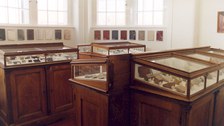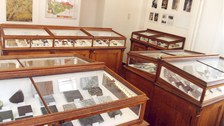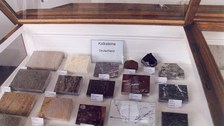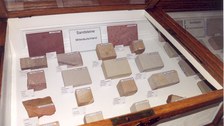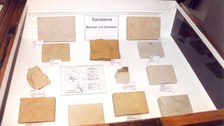Subcollection 8 - Construction Rocks
The collection currently contains nearly 900 objects (as of December 2008) in the form of handpieces, sawn and partially polished plates and individual samples of buildings.
In one of the showrooms especially interesting or decorative objects are presented in showcases. The objects are complemented by regional maps of natural stone deposits and a small collection on typical damages due to weathering. This exhibition is mainly used for educational purposes but on request it is also available to other interested parties.
An important task of the collection is to hold typical natural stones, used for construction purposes in the past and present, for comparative purposes. Requests from companies of preservation concern repeatedly the origin of discovered building stone or the possibilities for the replacement of (currently) unavailable rocks with equivalent material. In the years 2002-03, the Professorship of Applied Geology (since 2019 working group of Applied Geology) was hired to register the historic marble floors of the Green Vault in the Castle of Dresden. The floor stones were assigned to the corresponding deposits and later on, for the restoration of the rooms proposals were given regarding the replacement of the no longer exploitable "Saxon marbles". The collection is of inestimable value as it allows a quick comparative access on various types of natural stone available on the market as well as used ones in the history.
Worldwide the number of building and decoration rocks used in the past and currently available is unclear. Therefore, a completeness of the collection is hardly possible and a rather regional focus for the collection is aimed. The emphasis is placed in the eastern German states of Saxony, Saxony-Anhalt and Thuringia as well as adjacent territories, which had a historical importance for the supply of building materials in the above-mentioned states. Considered are historically significant natural stones, even if they are no longer mined these days.
Against this background, the collection holdings in the focal area should be expanded on the one hand, but on the other hand made effective for practice. This concerns not only corresponding requests from the State Office for the Preservation of Monuments or the building authorities, but also from specialist planners from the private sector in the preservation of historical monuments, which are hereby to be encouraged. In addition, we are of course grateful for the provision of interesting natural stone building samples, which are incurred in the repair of historic buildings or for corresponding evidence of waste.
Impressions of the subcollection 8 - Construction rocks
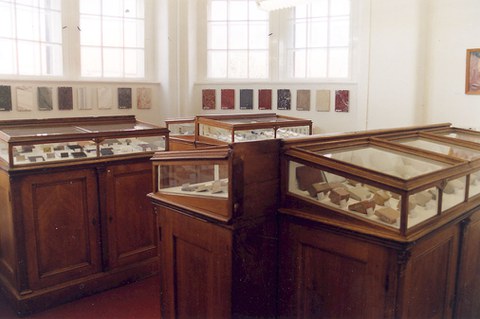
© Institut für Geotechnik

© Institut für Geotechnik
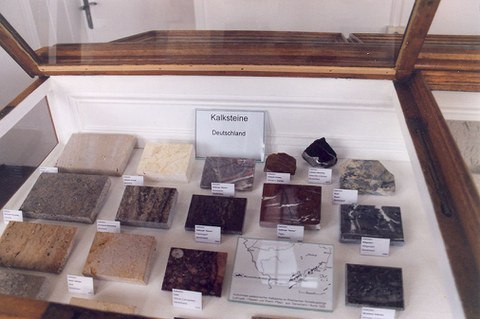
© Institut für Geotechnik
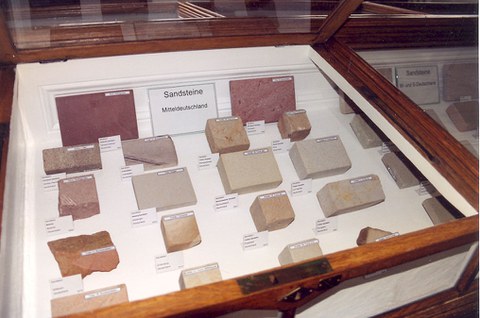
© Institut für Geotechnik
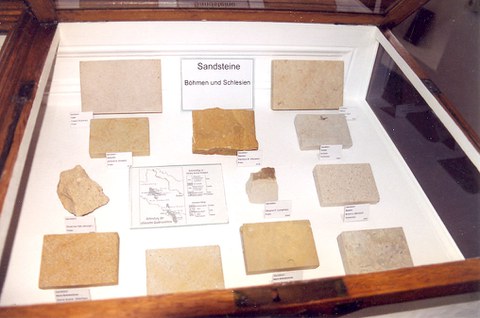
© Institut für Geotechnik

